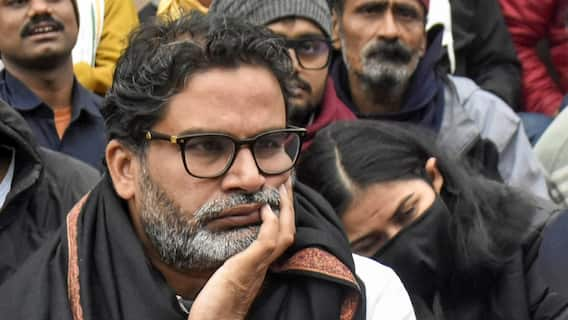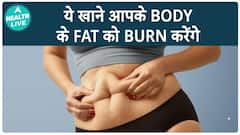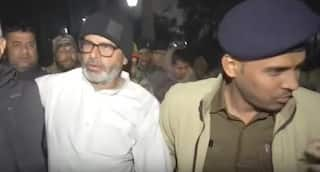World Ethnic Day 2023: Diving Into India's Gastronomical Extravaganza
ABP Live sought the opinions of experts who took us to a culinary trip across the country as we explored the intricacies of North Indian, South Indian and Bengali cuisine.

New Delhi: India has a broad diversity of cuisines because of its many climates, soil types, cultures, and religions, as well as influences from other nations. Indian food as a whole dates back to the prehistoric era and is present anywhere there is a sizable Indian diaspora. On World Ethnic Day, let's delve into the variety in Indian cuisine, the different cooking tecniques, the spices used and know how the tastes vary as one moves along the country.
In this regard, ABP Live sought the opinions of experts who took us to a culinary trip across the country to explore the intricacies of North Indian, South Indian and Bengali cuisine.
THE CULINARY DELIGHTS OF NORTH INDIAN CUISINE:
Ananya Das Sethi, Owner, Earthen Tadcka Dhaba said, "North Indian cuisine is renowned for its exquisite flavours, which are achieved using ghee, rich butter, and a well-balanced blend of ground spices, distinguishing it from the culinary traditions of other regions."
She then spoke indetails about the ingredients used in North Indian food and how do they add to the flavour of the dishes.
- Ghee: This adds richness and depth of flavour to the preparations.
- Butter: It is frequently used to enhance the richness and indulgence of North Indian dishes and imparts a luscious texture and a delightful flavor.
- Spices: North Indian cuisine is known for its robust and aromatic spices. These can include a combination of ground or whole spices such as cumin, coriander, turmeric, cardamom, cinnamon, cloves, black pepper, and fenugreek seeds, among others.
- Ginger and Garlic: These two ingredients are widely used in North Indian cooking. Ginger provides a warm, pungent, and slightly sweet flavor, while garlic adds a distinct savory taste. They are often used together to form a flavorful base for many dishes.
- Fresh Herbs: North Indian cuisine also incorporates the use of fresh herbs like cilantro (coriander leaves), mint, and curry leaves that add freshness, fragrance, and a vibrant touch to the dishes.
- Yoghurt: Yoghurt or curd is a common ingredient used for marinating meats, adding creaminess to gravies, or even served as a refreshing accompaniment. It balances out the spiciness and provides a tangy flavor to the dishes.
These ingredients, when combined in various proportions and cooking techniques, create the distinct and delectable flavors that are characteristic of North Indian cuisine.
Chef Rajesh Wadhwa of Loya and Executive Chef at Taj Palace shared some interesting cooking techniques of North Indian cuisine. They are as follows:
1. Dhungar: This technique is used to add a buttery, smoky flavour as a finishing touch to food. It involves the interaction of hot coals and ghee in a smoking chamber, most frequently a covered pot. Any food you trap inside that pot will be perfumed by the smoky, buttery aroma that results from this interaction.
2. Baghar: In English, Baghar is referred to as tempering. In various regions of the nation, it is also referred to as tadka, chowkna, or ghee durust karna. In essence, this method involves infusing oil with the aroma and smell of herbs and spices, which, when combined with food, gives flavour.
3. Dum: The Hindi word 'Dum', which means "breath," describes a cooking technique in which food is cooked in a pot that is completely covered in order to prevent the aroma from escaping. The pot is put on simmering coals or heat during this slow cooking procedure, and it is also said that the dish gets more flavourful as a result.

THE DELICACIES OF SOUTH INDIAN CUISINE:
Vivek Kalia, Executive Chef at The Westin Kolkata Rajarhat spoke about the speciality of South Indian food and discussed how it differs from other regional cuisine.
He said, "South Indian cuisine is known for its unique flavors, diverse ingredients, and emphasis on rice, lentils, coconut, and spices. It is predominantly vegetarian, although there are also non-vegetarian options available."
"Compared to other regional cuisines in India, South Indian food stands out for its extensive use of rice, coconut, and tangy flavors. The dishes tend to be lighter and less oily. While North Indian cuisine has a stronger influence of wheat-based dishes like rotis and naans, South Indian cuisine focuses more on rice-based preparations and fermented batters. The spice profiles also differ, with South Indian cuisine utilizing more mustard seeds, curry leaves, and regional spices like fenugreek."
The chef also discussed the special ingredients that goes into South Indian dishes that contribute to their unique flavors and aromas. Here are some of them:
- Rice: Rice is a staple ingredient in South Indian cooking. It is used in various forms like steamed rice, rice flour, and fermented rice batters for dosas and idlis.
- Lentils (Dal): Different types of lentils are extensively used such as toor dal, urad dal, moong dal, and chana dal. They are used in soups, stews, batters, and side dishes.
- Coconut: Coconut is a signature ingredient in South Indian dishes. Grated coconut, coconut milk, and coconut oil are commonly used for flavoring curries, chutneys, and desserts.
- Tamarind: Tamarind is a souring agent used in the form of pulp or paste in sambar, rasam, and chutneys to give a distinctive tangy flavor.
- Curry Leaves: Curry leaves are are often tempered in hot oil and added to curries, soups, and chutneys.
- Mustard Seeds: Mustard seeds, especially black mustard seeds, are commonly used for tempering enhancing the taste of curries, chutneys, and vegetable stir-fries.
- Red Chilies: South Indian cuisine incorporates various types of red chilies, including dried red chilies, red chili powder, and fresh red chilies. They add heat and spice to the dishes, balancing the flavours.
- Fenugreek Seeds: Fenugreek seeds have a slightly bitter taste and are used in tempering or ground into powders.
- Turmeric: Turmeric powder is widely used in South Indian cooking for its vibrant yellow colour and earthy flavour. It is a key ingredient in curries, rice dishes, and spice blends.
- Asafoetida: Asafoetida, also known as hing, is a pungent spice used sparingly, often tempered in hot oil, to add a unique flavor to dishes.
The chef also spoke about the different cooking tehniques employed saying that South Indian cuisine is known for its distinct cooking styles that contribute to the unique flavors and textures of the dishes.
Here are some special cooking styles commonly found in South Indian cuisine:
1. Tempering/Tadka: It is a common cooking technique in South Indian cuisine and involves heating oil or ghee and adding spices like mustard seeds, cumin seeds, curry leaves, and dried red chilies to infuse the oil with their flavors. This tempered mixture is then added to curries, dals, chutneys, and rice dishes to enhance their taste.
2. Steaming: Steaming is extensively used in South Indian cuisine, especially for breakfast items like idli and appam. Fermented rice and lentil batters are poured into specialized molds or steamer plates and steamed until they turn soft and fluffy.
3. Fermentation: The fermentation of batters made from rice and lentils is essential for dishes like dosas, idlis, and vadas. This helps to develop the unique flavors, textures, and nutritional properties of these dishes.
4. Roasting and Grinding Spices: South Indian cuisine often incorporates freshly ground spice blends to enhance the flavors of dishes. Spices like coriander seeds, cumin seeds, fenugreek seeds, and dried red chilies are dry roasted to bring out their aromas, and then ground into fine powders. These spice powders are used in various curries, sambar, rasam, and chutneys.
5. One-pot Cooking: South Indian cuisine includes several one-pot dishes, where all the ingredients are cooked together in a single vessel. Bisi Bele Bath, Pongal, and Puliyogare are examples of one-pot meals in South Indian cuisine. This cooking style simplifies the process and allows flavors to meld together.
6. Sundakkai (Turkey Berry) Cooking: Sundakkai, or turkey berry, is a popular ingredient in South Indian cuisine. It has a slightly bitter taste and is used in various dishes. To reduce the bitterness, the berries are soaked in yogurt or buttermilk before cooking. Sundakkai is added to curries, stir-fries, and chutneys for its unique flavor and health benefits.

THE MOUTH-WATERING TREATS OF BENGALI CUISINE:
Sharing the speciality of Bengali cuisine, Chef Prakash Chettiyar, Director of Culinary, JW Marriott Kolkata said, "Bengali cuisine is indeed known for its unique flavors and culinary traditions. The presence of certain spices like kalonji (kala jeera), mustard powder (sorse), radhuni, and khaskhas (poppy seeds) in many vegetarian dishes sets it apart from other regional Indian cuisines."
Talking about the love of fish in Bengal, Chef Prakash went on to say, "Bengali cuisine is renowned for its extensive use of fish, thanks to the abundance of rivers and water bodies in the region. Various types of fish, such as hilsa, rohu, and katla, are cooked in different styles, including jhol (light curry), jhal (spicy), and bhapa (steamed). Fish is considered a delicacy in Bengali cuisine, and there are numerous recipes dedicated to its preparation."
"In addition to fish, Bengali cuisine also features a wide array of vegetarian dishes, utilizing ingredients like potatoes, gourds, greens, and lentils. Popular vegetarian preparations include shorshe begun (eggplant in mustard sauce), cholar dal (Bengal gram lentils), shorshe posto (poppy seed in mustard sauce), and shobji diye bhaja moong dal (split green gram with vegetables).", he further added.
The chef also shared some interesting cooking styles in Bengali cuisine.
1. Steaming (Bhapa): This technique involves cooking food by steam, often using a mix of spices and mustard paste. Fish, vegetables, and even sweets like bhapa doi (steamed sweet yogurt) are prepared using this method.
2. Smoky flavors: Bengali cuisine utilizes smoking techniques to infuse dishes with a distinct smoky taste. For example, smoked hilsa, known as "Bhapa Ilish," is a fusion creation where the hilsa fish is deboned and smoked, making it easier for people not accustomed to dealing with its sharp and tough bones.
3. Wrapped and charcoal roast: In this style, food items are wrapped in leaves like banana leaves and roasted over charcoal. This technique is often used for dishes like paturi (fish or vegetable wrapped in banana leaves) and bhapa shorshe ilish (hilsa fish steamed in mustard sauce).
4. Dum cooking: Dum cooking involves slow-cooking food in a sealed pot, allowing the flavors to meld together. Biryanis and certain meat curries are prepared using this method to enhance the taste and texture of the dish.

India's vast culinary heritage is a reflection of the nation's varied cultures, traditions, and tastes and the food is a real expression of the nation's diverse tapestry of flavours. From the hot curries of the North to the delicate coconut-infused dishes of the South to the aromatic spices of the East, its a journey through history, culture, and the art of mixing ingredients to produce delicious and unforgettable culinary experiences.
Trending News
Top Headlines








































